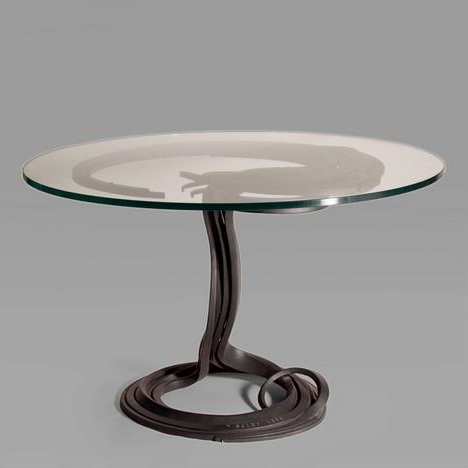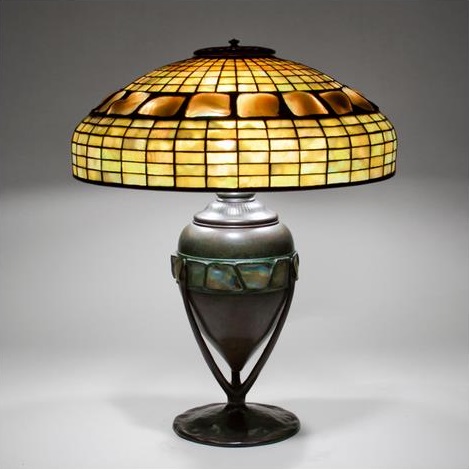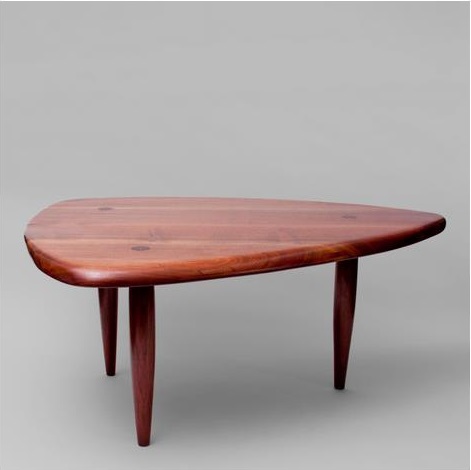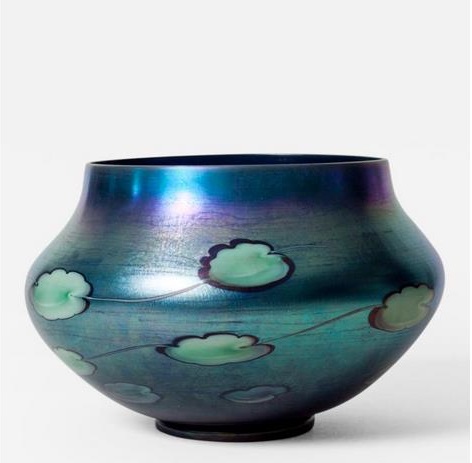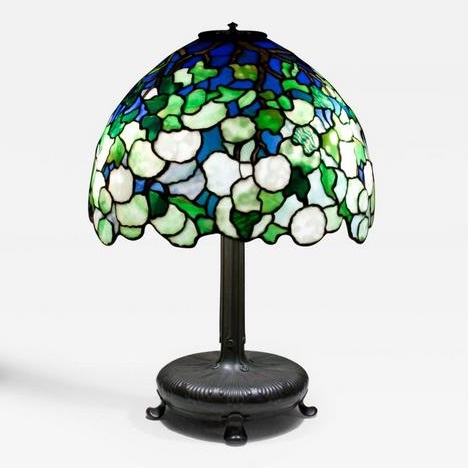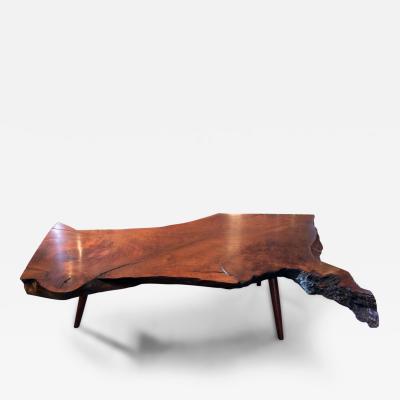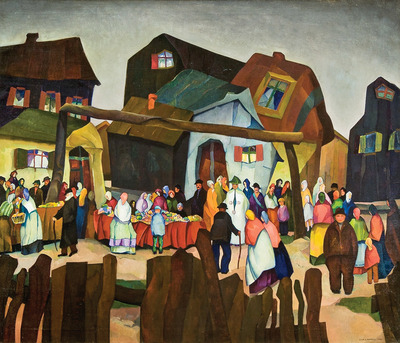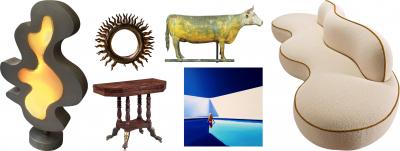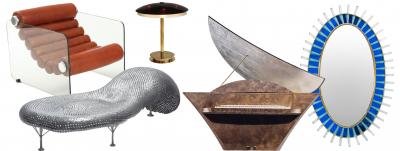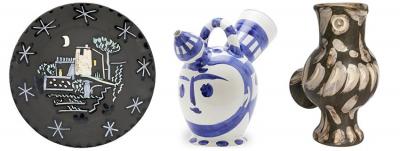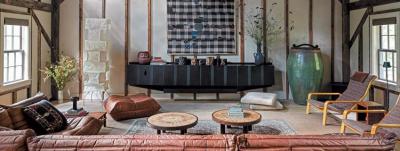Dealer Focus: Arlie Sulka, Owner of Lillian Nassau LLC
Founded in New York in 1945, Lillian Nassau LLC is one of the world’s oldest and most respected dealers of works by Tiffany Studios and Louis Comfort Tiffany. Established by the inimitable Lillian Nassau, a savvy and daring dealer who helped carve out a market for Art Nouveau and Art Deco objects during the mid-twentieth century, the gallery has evolved smartly and gracefully over the past seventy years.
For the past decade, the gallery has been under the ownership of its longtime Managing Director, Arlie Sulka. One of the foremost experts on Louis Comfort Tiffany and Tiffany Studios, Arlie worked closely with Lillian and her son, Paul, for close to thirty years before acquiring the business directly from the Nassau family in 2006. Arlie has maintained Lillian Nassau’s reputation as the go-to gallery for all things Tiffany, while expanding its focus to include Mid-Century Modern and Studio furniture and design.
We caught up with Arlie, who appraises on the popular PBS series Antiques Roadshow, to discuss what she loves most about the field, her advice for young collectors, and much more.
InCollect: How did you get involved with this industry and learn about the material?
Arlie Sulka: I learned everything on the job through a lot of hands-on training. I came to New York after college and worked at a small auction house—it was there that I met Mrs. Nassau, who asked me to come work for her. I’m sorry to admit that I didn’t know who she was at the time! I asked around and learned that her gallery was a place that I would really like to be. I began working there in the beginning of 1980. I saw the best of the best and I worked for Lillian until she retired and then I worked for her son, Paul. Then, in 2006, I acquired the business from the Nassau family.
InCollect: What do you enjoy most about this field?
Arlie Sulka: First of all, I love what I handle and I feel very fortunate that we specialize in probably the most important American decorative artist of the early twentieth century, Louis Comfort Tiffany. I’ll also admit that I love the thrill of the chase and, like my collectors, the acquisition process is probably the most exciting part. I really share the same sentiments about it as they do.
InCollect: Can you talk a bit about the gallery’s inclusion of Mid-Century Modern furniture and design?
Arlie Sulka: When I acquired the business, I wanted to do a few things differently—I expanded our web presence, redesigned the website, published two books on Tiffany, and started having exhibitions at the gallery. I knew that at some point I wanted to do something with Mid-Century furniture and design. My husband and I live with it at home and we display Mid-Century furniture along with our Tiffany Studios lamps and glass so I thought, why not do this at the gallery? Now, I wasn’t the first to have this thought. In the 1950s and ‘60s, the designer Edward Wormley, who was very friendly with Lillian, often borrowed Tiffany Studios works from the gallery to use during photo shoots featuring his furniture. He also included Tiffany favrile glass tiles in some of the furniture that he designed for Dunbar. Wormley felt that Tiffany harmonized well with his modern designs so knowing that it had worked then, I thought why can’t we do the same thing now? We have loved the experience—we’re very selective about how much and what we choose to show in the gallery as it does take up a lot of real estate. Every piece of furniture we choose we feel goes very well with the decorative objects we have. For example, we have a number of Albert Paley tables. Albert has been influenced by Art Nouveau and you can see that reflected in his work. It works very nicely with Tiffany objects. To me, his sculpture is a natural progression of the Art Nouveau aesthetic, especially in Albert’s early, organic pieces.
InCollect: What is your best advice for young collectors?
Arlie Sulka: I often tell young collectors not to buy something just because they think they’re supposed to. The point of collecting is to acquire pieces that make you happy—when you walk into a room and see a piece, it should make you smile. Don’t look at these objects as commodities—they are pieces that you should want to live with. This is what the decorative arts are all about. You don’t buy an object to store it, you buy it to live with it.
InCollect: When someone has bought something from you, what do you hope they will take away?
Arlie Sulka: We try to educate the consumer, always. Even if you don’t buy something from us, we are very generous with our information. We have a lot of provenance and a lot of history. We want our clients to find objects that they can get enjoyment from every day—that’s really the whole idea. You collect because you enjoy owning the pieces and looking at them.
InCollect: Do you live with antiques? What are some of your favorite objects that you have collected?
Arlie Sulka: Our home is very eclectic—we have American art pottery, metalwork, Mid-Century furniture, including pieces by Tommi Parzinger and T.H. Robsjohn-Gibbings, and Tiffany lamps and glass. Before my husband and I bought our apartment, we had acquired a huge Robsjohn-Gibbings table designed for a Guggenheim in the late 1930s. Paul Donzella, from whom we bought it, was kind enough to store it for us until we settled on a home. As we looked at each potential apartment, we had a measuring tape in hand to figure out if this very long table would fit. Eventually we found a place that had space for it. It was the first piece that we acquired together and we were damn well taking it with us!
InCollect: What is something that our readers might not know about the gallery?
Arlie Sulka: In the 1960s and ‘70s the gallery had a huge celebrity clientele, including the Beatles, Andy Warhol, Rod Stewart, Led Zeppelin, the Bee Gees, Barbra Streisand, and David Geffen. It was a big part of the business and it really drove the market for a long period of time. It was around the time of the “flower power” generation and the Tiffany Studios aesthetic really fit into that—a lot of these celebrities formed some really terrific collections. Lillian was like a grandmother to a lot of them and she really followed their careers. Even when she was well into her seventies she would be attending their concerts!
InCollect: What do you see on the horizon?
Arlie Sulka: Tiffany Studios is the mainstay of the business, but the business has room to grow. There are more collectors entering the market every year. Next year, when the Center for the Study of Women’s History opens at the New-York Historical Society, there will be 100 Tiffany lamps from the Egon Neustadt Collection on permanent exhibition and I think that will encourage even more collecting. Being able to see that many lamps at one time will be very significant for this market. There is also a Tiffany exhibition opening on April 10 at the Queens Museum, which houses the other half of the Neustadt Collection. I like to say, when one Tiffany show closes, another opens. It’s proof that the interest is here to stay.
To visit Lillian Nassau LLC’s InCollect page, click HERE.

















